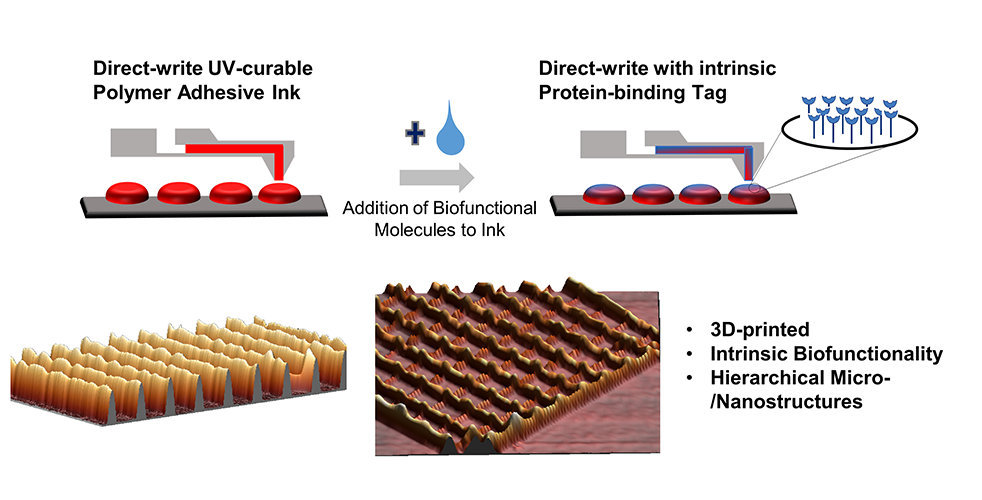
Integration of Biofunctional Molecules into 3D-Printed Polymeric Micro-/Nanostructures
-
Author:
E. Berganza, G. Apte, S. K. Vasantham, T.-H. Nguyen, M. Hirtz
-
Source:
Polymers 14 (2022) 1327
- Date: 2022
-
Three-dimensional printing at the micro-/nanoscale represents a new challenge in research and development to achieve direct printing down to nanometre-sized objects. Here, FluidFM, a combination of microfluidics with atomic force microscopy, offers attractive options to fabricate hierarchical polymer structures at different scales. However, little is known about the effect of the substrate on the printed structures and the integration of (bio)functional groups into the polymer inks. In this study, we printed micro-/nanostructures on surfaces with different wetting properties, and integrated molecules with different functional groups (rhodamine as a fluorescent label and biotin as a binding tag for proteins) into the base polymer ink. The substrate wetting properties strongly affected the printing results, in that the lateral feature sizes increased with increasing substrate hydrophilicity. Overall, ink modification only caused minor changes in the stiffness of the printed structures. This shows the generality of the approach, as significant changes in the mechanical properties on chemical functionalization could be confounders in bioapplications. The retained functionality of the obtained structures after UV curing was demonstrated by selective binding of streptavidin to the printed structures. The ability to incorporate binding tags to achieve specific interactions between relevant proteins and the fabricated micro-/nanostructures, without compromising the mechanical properties, paves a way for numerous bio and sensing applications. Additional flexibility is obtained by tuning the substrate properties for feature size control, and the option to obtain functionalized printed structures without post-processing procedures will contribute to the development of 3D printing for biological applications, using FluidFM and similar dispensing techniques.
